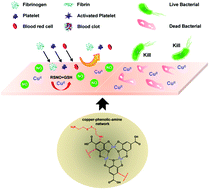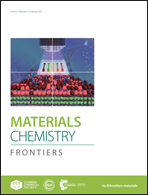A facile metal–phenolic–amine strategy for dual-functionalization of blood-contacting devices with antibacterial and anticoagulant properties†
Abstract
Thrombosis and infections of extracorporeal circuits and indwelling medical devices are the two major life-threatening complications faced in clinical practice. Herein, we report a novel and facile metal–phenolic–amine surface modification strategy to engineer a multifunctional coating on these devices to combat thrombosis and infection. This strategy is inspired by the metal–catecholamine coordination complex of [Fe(dopa)3] in mussels, in which Cu(II) ions (metal), plant polyphenol gallic acid (phenol) and cystamine (amine) are employed to fabricate a copper–phenolic–amine network. Our in vitro and in vivo experiments reveal that the resultant Cu(II)-chelating coatings endow the modified tubing with not only durable antibacterial properties, but also capability to persistently generate anticoagulant therapeutic nitric oxide (NO) gas in the presence of endogenous S-nitrosothiols (RSNO) from fresh blood. We anticipate that our simple and multifunctional coating strategy will be a milestone in the development of surface engineering, especially that of biomedical devices.



 Please wait while we load your content...
Please wait while we load your content...